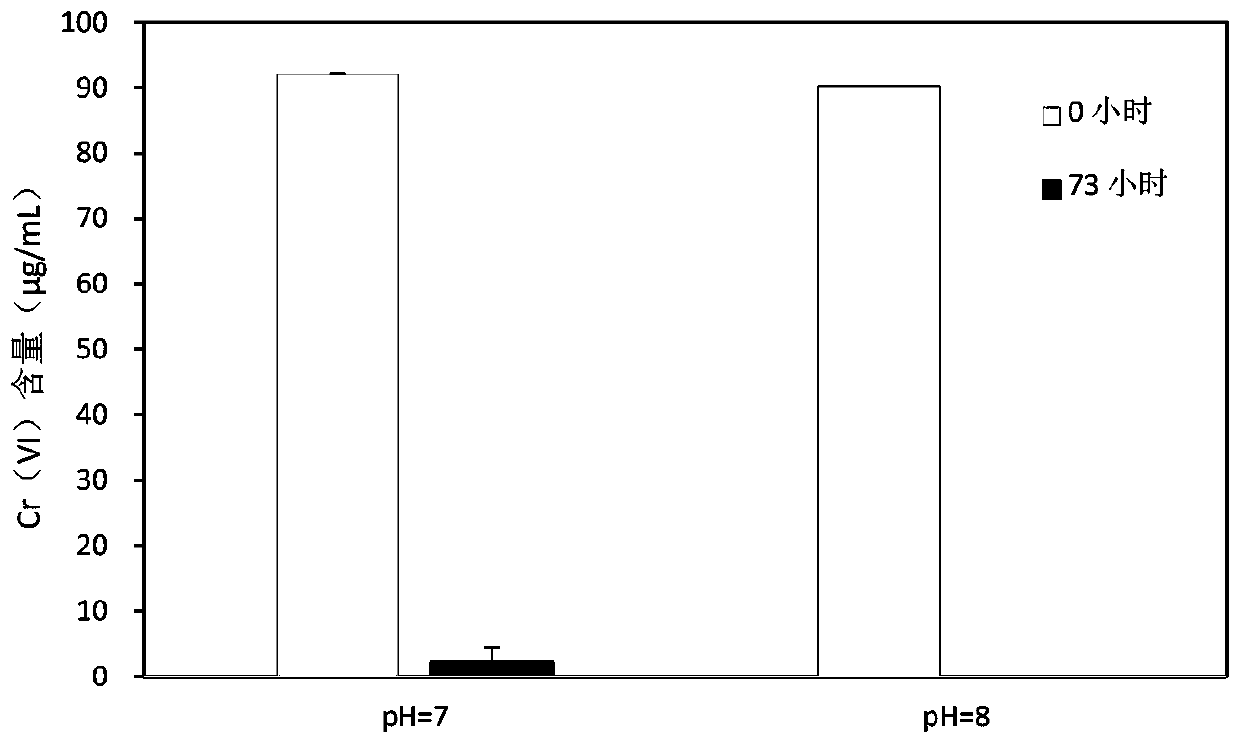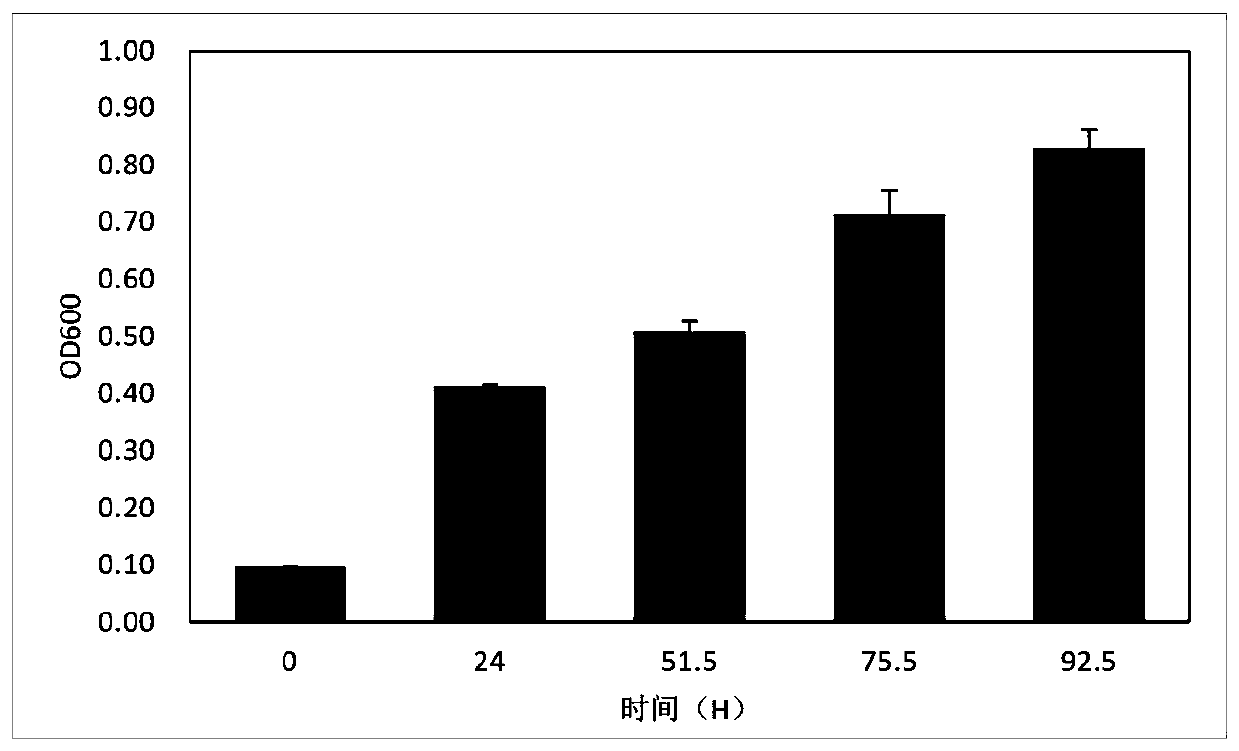microbial flora and application thereof in treating Cr heavy metal pollution
A microbial flora, heavy metal technology, applied in biological water/sewage treatment, microorganism-based methods, microorganisms, etc., can solve problems such as strong toxicity
- Summary
- Abstract
- Description
- Claims
- Application Information
AI Technical Summary
Problems solved by technology
Method used
Image
Examples
Embodiment 1
[0022] A method for enriching microbial flora, characterized in that it comprises the steps of:
[0023] (1) Collect the pond mud bottom as an environmental bacterial source, put the pond bottom mud into a culture bottle, use potassium dichromate to adjust the Cr(VI) concentration in the culture bottle, and set the volume to 600mL. After packaging, place it at 28°C Cultivate statically at high temperature for 30 days to obtain the first generation of enriched flora.
[0024] The physical and chemical properties of the pond bottom sludge are organic matter 30.15g / kg, total nitrogen 1.33g / kg, available phosphorus 35.4mg / kg, and water content 71%.
[0025] (2) Transfer the obtained first-generation enriched flora to fresh Cr(VI)-containing PCS culture medium, and culture at 28°C for 7 days to obtain the second-generation enriched flora. This method was transferred 5 times to obtain the 5th generation enriched bacterial population. The ability to transform Cr(VI) was stable, and...
Embodiment 2
[0033] The bacteria were cultured in the PCS culture medium containing Cr(VI), the initial pH of the culture medium was adjusted, and the ability of the bacteria to reduce Cr(VI) under different pH conditions was examined. The result is as figure 2 As shown, when pH=7 and pH=8, the flora can effectively reduce Cr(VI) in the culture solution. When the pH=7, cultured for 73 hours, the concentration of Cr(VI) in the culture medium decreased from 92.15μg / mL in the initial culture to 2.19μg / mL, and 97.6% of Cr(VI) was reductively transformed. When pH=8, after 73 hours of cultivation, the concentration of Cr(VI) in the culture medium was 0 μg / mL, and the reduction rate reached 100%.
Embodiment 3
[0035] Culture the flora in PCS culture solution containing 100 μg / mL Cr(VI), adjust the pH=8, and detect the change of flora OD600 during the culture process, the results are as follows image 3 . OD600 can reflect the biomass change in the process of microbial growth. Depend on image 3 it can be discovered. The flora can start to grow in the Cr(VI)-containing solution, and the OD reaches 0.41 after 24 hours of culture, and the biomass of the flora also increases with the increase of the culture time, and reaches 0.83OD at 92.5h.
PUM
 Login to View More
Login to View More Abstract
Description
Claims
Application Information
 Login to View More
Login to View More - R&D
- Intellectual Property
- Life Sciences
- Materials
- Tech Scout
- Unparalleled Data Quality
- Higher Quality Content
- 60% Fewer Hallucinations
Browse by: Latest US Patents, China's latest patents, Technical Efficacy Thesaurus, Application Domain, Technology Topic, Popular Technical Reports.
© 2025 PatSnap. All rights reserved.Legal|Privacy policy|Modern Slavery Act Transparency Statement|Sitemap|About US| Contact US: help@patsnap.com



